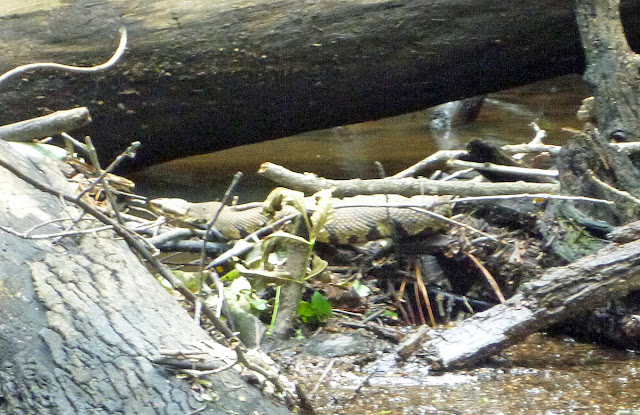From Key West we headed up the Florida atlantic coast, through a little of Georgia and in to South Carolina. We the spent the day at Congaree National Park which is the largest intact hardwood old growth forest in the Eastern US. It is in a flood plain which makes for interesting ecosystems.
The water level was low while we were there, about 3 feet. The highest they have seen in the last several years was 18 feet so everything we saw was under water at some point. We toured the forest on a boardwalk and also took a 3 hour guided canoe trip.
Congaree is also know for it's synchronous fireflies which of course happened the week before we were there.
Our guide Hannah, a college student from SC.
We were on the Cedar Creek Canoe Trail, it was quiet and slow moving with lots of wildlife.
A Brown Water Snake, about 3 feet long.
This is an awful photo, not in focus. I was trying hard to get something better while keeping the canoe away from this log because this is a Water Moccasin, the first time I've seen a venomous snake in the wild.Another Brown Water snake, not venomous so I wasn't afraid to get close to them.
After the canoe trip we toured the visitor center then walked through the woods on the boardwalk. This squirrel refused to pose for me, of maybe this was the view he wanted me to photograph.
My favorite part of Conagree was the Barred Owls. We found several to photograph. This was a juvenile that was part of a family of 4 or 5 as close as we could tell.
I think this is my favorite photo of the trip so far. It was one the path as we were walking from the parking lot to the visitor center.





















































